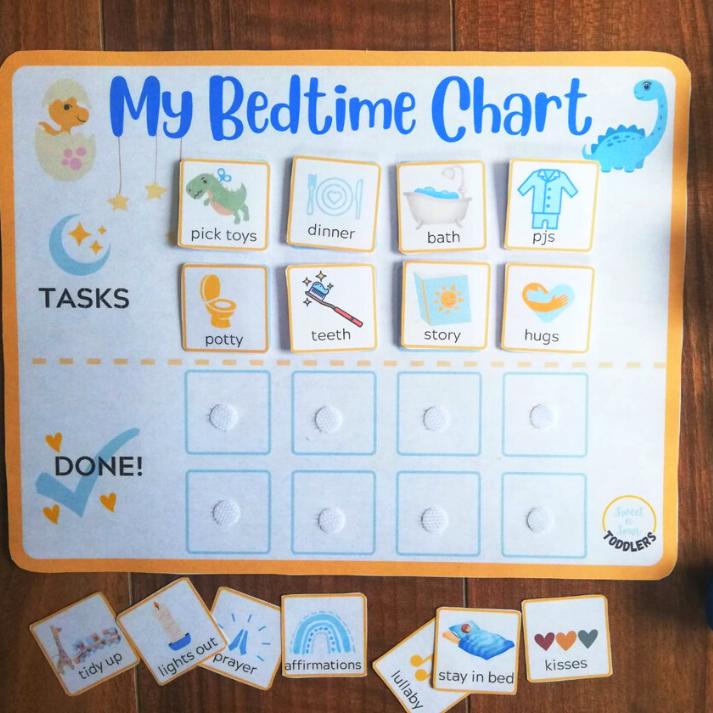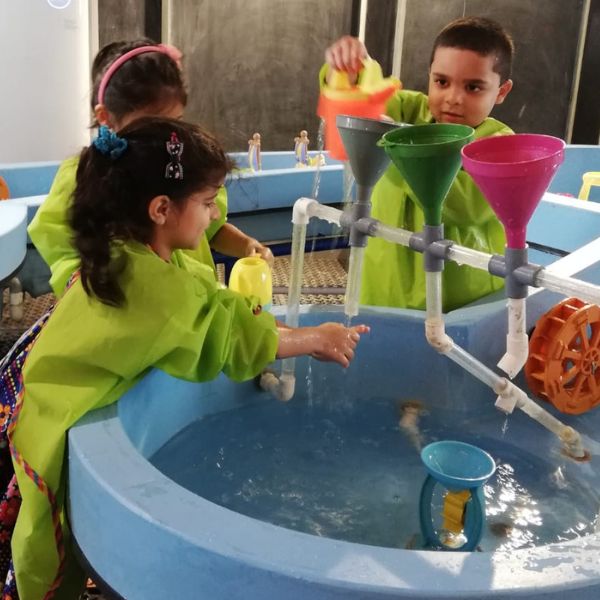My toddler won’t do quiet time – help!
Your toddler isn’t napping anymore. And it’s driving you nuts. Because now you don’t have an hour or two to get essential things done like take a shower or send that super urgent email.
Kids who stop napping are supposed to do quiet time. But what exactly is quiet time and how do you get your child on board with the idea?
Put simply, quiet time (as the name suggests) is when your child sits and quietly plays by themselves during the time that they would normally have napped.
Quiet time has a lot of benefits including giving children a chance to relax, unwind, engage in solitary play and have more opportunities for imaginative play.
Quiet time is crucial for all toddlers, whether they still take naps or not. This period of rest calms the mind and body, giving your little one a chance to break away from constant stimulations.
babysparks.com
Apart from being beneficial to your child, it’s also super important for YOU.
Looking after a toddler all day is anything but easy. Getting an hour or two midday is essential to ensure that you remain recharged, refreshed and most of all…SANE.
How can you gently transition your toddler from nap time to quiet time? Here are 5 tips that I have used and they have totally been a gamechanger in getting quiet time to work out smoothly for us.
I hope you find them as helpful as I did.
This post is about strategies to use when your toddler won’t do quiet time
8 Tips to Try When Your Toddler Won’t Do Quiet Time
This post contains affiliate links. As an Amazon Associate I earn from qualifying purchases.
Get Your Quiet Space Ready
The first thing you need to do is have a space that is dedicated to quiet time. In most homes this is going to be your child’s bedroom.
You need to prep the room and make sure that it is a safe place for your toddler to play independently.

This means anchoring furniture to the wall, making sure sockets are covered and removing any small items and toys such as lego pieces that could be a choking hazard.
You can read my more detailed most on toddler proofing your home over here.
Next, ensure that only those play things are out which your child can play with independently. Otherwise your little one will keep coming to you for assistance.
Put some thought into designing the room in such a way that it is a cozy, inviting place that encouaages independent play.
Always remember, choose quality over quantity when it comes to toys. Kids who have too many toys in their room get overwhelmed and end up playing with nothing. It’s better to opt for a few open ended items that can be played with in many ways.
RELATED POSTS:
5 Genius Strategies to Stop Your Toddler Slamming Doors
5 Helpful Tips to Stop Toddler Unplugging Things
7 Genius Strategies to Handle a Toddler Climbing The Table
Prepare Your Child
Don’t just jump from nap time to quiet time without first explaining to your child what is going on. You need to explain to your toddler that quiet time is a period where they play in their room quietly.
Make it sound like a priviledge and not a chore.
Explain that our body needs rest and since we aren’t sleeping anymore, we get to stay in our room and do fun activities.
Include your child in the process by discussing with them what activities they’d enjoy doing for quiet time.
Expert tip: it’s important to note that if you really want 1-2 hours in the day of quiet playing, you HAVE TO make sure that for the rest of the day, you have spent quality time with your child. Children who have their cup full i.e. they have gotten plenty of love, attention and connection from their parents the rest of the day are much more likely to happily play independently.
You can read some amazing positive parenting strategies for toddlers over here.
Start Slow
Quiet time is something that takes time. You won’t magically get your child to transition from afternoon naps to playing independently for 2 hours.
You need to build up on quiet time slowly. Start off with 5 minutes of independent play and then try to build it up to 20-30 minutes and then an hour or two.
Initially, you’ll need to be there with your child while they are doing their activity. Then as soon as you see that they are engrossed in play, you quietly back out of the room.
They might stop playing after 5 minutes and come to get you. In which case you’ll need to do the above a couple of more times. The key is to be really really patient.
Choose Quiet Time Activities That Engage
It’s important to be strategic with which activities you choose for quiet time. Here are a couple of important things to keep in mind.
Firstly, opt for activities and toys that are open ended. Avoid toys with lots of lights and sound as these will over stimulate your little one instead of calming them.
Relaxing, quiet time activities can include puzzles, blocks, books, pretend play items like play tents, dress up costumes, stuffies, dolls and vehicles.
Art supplies are another fantastic choice. I have a little table for my 3 year old where I’ve put crayons, markers, color pencils and paint markers along with a drawing pad. Every day during quiet time she sits for at least 20 to 25 minutes making pictures, drawings and paintings.

RELATED POSTS:
15 Genius Non Toy Gifts for Toddlers Who Love to Draw
Brilliantly Fun Educational Gifts for Toddlers That Promote Learning
Remember to keep switching up the activities and rotating the toys every week or two. That way your toddler won’t get bored doing the same activities every day.
It’s also important to make sure that the toys and activities are age appropriate. If they are too challenging, independent play will totally not happen.
You can read my more detailed post on quiet time activities for toddlers over here. In this post I go over my absolute favorite mess free, screen free quiet time activities that keep my kids occupied for ages.
Stay In Close Proximity
This tip has honestly been a game changer for me. Previously, I’d tell my toddler it was quiet time, set up her space and walk out of her room to sit in the lounge and do my work.
But that would result in whining, protests and plenty of tantrums. It was ANYTHING but quiet in the house.
I decided to move my work table to her room and set up a cute little space for myself in the far away corner of her room. That way I was far away enough for it to actually qualify as quiet time and yet close by enough for her to feel safe.

Now I get to work on my blog for 2 hours every morning (yay!) because she knows I’m close by and in return she will happily and quietly play independently. It’s a win-win for both of us.
Break It Up
Expecting your child to play for 2 consecutive hours quietly and independently is unrealistic.
Sure, maybe there are lucky parents out there whose kids just love playing quietly by themselves.
But for most of us, its not realistic to expect our kids to play for such a long stretch of time.
A great hack is to break it up into 2 to 4 time blocks, depending on your child’s age and attention span.
For example, you could have 45 minutes of independent play followed by a 15 minute snack break. This could be followed by 30 minutes of screen time.
You could use the screen time as a privilege and tell your child that if they play independently for 45 minutes, they can enjoy snacks and screen time afterwards. This can become a compelling way to motivate them to cooperate at quiet time.
If you’re not comfy with using screen time as part of your quiet time routine, you could replace that with something else like independent outdoor play in the backyard or arts and crafts time.
Use a Timer
Toddlers love visuals. It’s hard for them to understand what 45 minutes actually means.
A timer, whereby kids can see the time period, helps them understand when quiet time starts and ends. This makes them more eager to follow the timer’s cues.
This is a super helpful countdown timer for kids that can help them visualize and understand time.
Set Expectaions & Be Consistent
It’s important to set realistic expectations. Both for yourself and your toddler.
You need to remember that your child is little and that there will be many days when quiet time won’t go the way you imagine.
You also need to set the expectation with your toddler that quiet time is super important for everyone to get the break and rest that is needed.
Being consistent and having a predictable routine will help your child see quiet time as a natural part of their day.
Looking to bring about structure in your child’s routine? Check out this adorable bedtime routine chart that is helping parents worldwide bring peace and calm to their evenings.

You can check it out here! (available in two different colors and themes)
This post was about strategies to use when your toddler won’t do quiet time
Enjoyed this post? You might like to read these posts next:
10 Magical Steps to Get Toddlers to Sleep in Their Own Bed
5 Astonishingly Calming Bedtime Activities for Toddlers
5 Expert Hacks on How to Transition Your Toddler to a Blanket
7 Super Clever Ways to Stop Your Toddler Falling Out of Bed
10 Awesome Tips to Handle A Toddler Cranky After Nap
7 Genius Hacks to Try When Toddler’s Bedtime Routine Takes Too Long





Leave a Reply